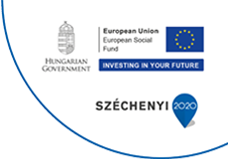Introduction of a longitudinal international (RO-SVK-HU) study about body composition, motor development and quality of life among 6-7-year-old pupils
AH Molnár1, VP Ardelean2, ÁV Nagy1, B Vári1, K Orbán1, Cs Fintor1, T Ocskó1, R Szász1, F Győri1, B Dobay3, I Boros-Bálint4, GF Deak4, J Simonek5, N Halmová5, I Alattyányi6, R Csetreki6, VL Andrei2
1University of Szeged, Institute of PE and Sports Science, Szeged, Hungary
2Aurel Vlaicu University, Faculty of PE and Sport, Arad, Romania
3J. Selye University, Department of PE and Sports, Komarno, Slovakia
4Babeş-Bolyai University, Department of Kinesiotherapy and Theoretical Disciplines, Cluj-Napoca, Romania
5Constantine the Philosopher University, Deparment of PE and Sport, Nitra, Slovakia
6Foundation for the Sustainable Development of our Society, Szeged, Hungary
In this study we would like to compare the body composition, the motor development and the quality of life of children from three countries who started to attend primary school in the autumn of 2018.
It is well-known that there is an interaction between these indicators and regular physical activity is beneficial in the aspect of these characteristics.
In one of the participant countries there are everyday PE lessons (5 per week). In the other two countries there are significantly fewer PE lessons per week. Accordingly, our main hypothesis is that more regular PE lessons are more effective from the viewpoint of body composition, motor development and quality of life.
This presentation is about the details of the project’s aims, methods and the results of the first measurement period.
Supported by EFOP-5.2.2-17-2017-00035.


